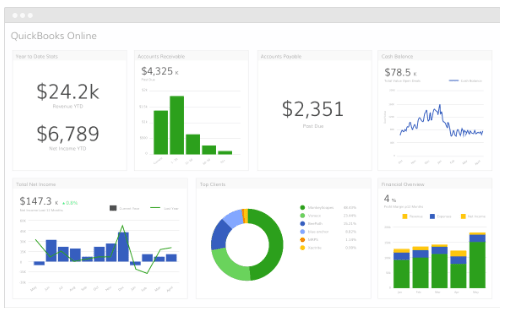Calamaluk, la casa vacanza adatta a te si trova a 2 km dalle spiagge più suggestive del luogo.
Difference Between T Account And Ledger
Content
- Video Explanation Of T Accounts
- Bookkeeping: Classification Of Accounts
- What Are The Primary Components Of A Trial Balance Sheet?
- Balances Of Accounts: What Is A Debit Balance And A Credit Balance?
- Balancing T Accounts With Opening And Closing Balances
- Accounts Impacted By Debits And Credits
- Debits And Credits For T Accounts

If money is received by someone it must have come from someone. Anything capable of being owned or controlled to produce value is considered an asset.
- Date column, to show date of the transaction for both debt and credit entries.
- Equity is the residual claim or interest of the most junior class of investors in assets after all liabilities are paid.
- Common Stock had a credit of $20,000 in the journal entry, and that information is transferred to the general ledger account in the credit column.
- Cash is labeled account number 101 because it is an asset account type.
- A second use is to clarify more difficult accounting transactions, for the same reason.
This software or hardware is developed for general use in a variety of information management applications. It is not developed or intended for use in any inherently dangerous applications, including applications that may create a risk of personal injury. If you use this software or hardware in dangerous applications, then you shall be responsible to take all appropriate fail-safe, backup, redundancy, and other measures to ensure its safe use. Oracle Corporation and its affiliates disclaim any liability for any damages caused by use of this software or hardware in dangerous applications. Let’s say your mom invests $1,000 of her own cash into your company. Using our bucket system, your transaction would look like the following. In addition to adding $1,000 to your cash bucket, we would also have to increase your “bank loan” bucket by $1,000.
Video Explanation Of T Accounts
In accounting and finance, equity is the residual claim or interest of the most junior class of investors in assets after all liabilities are paid. In an accounting context, shareholders ‘ equity represents the remaining interest in assets of a company, spread among individual shareholders in common or preferred stock. Accounting primarily centers around two amount columns, debits on the left and credits on the right, and the sum of both columns has to match. If you’re trying to figure out how to record a transaction, T accounts can help.
C’est exactement ce que tu fais, elle a publié un commentaire qui l’a dégouté et t’as dis «bah en même temps tu cherches mdrrr t’attendais que ça» c’est exactement la définition et SI BIEN SUR que tu peux dénoncer les dérapages wesh tu es musulman tu te dois de blâmer le blâmable
— Reddington fan account (@LaDerdesders_) November 28, 2021
The debit is the larger of the two sides ($5,000 on the debit side as opposed to $3,000 on the credit side), so the Cash account has a debit balance of $2,000. The recording of financial transactions is an important step in the accounting cycle and should be done accurately to ensure that the transactions can easily be tracked. The different components of a business which are assets, liabilities, and shareholder’s equity are recorded in the different accounts. The information in the particular accounts is then summarized in the general ledger showing the balance of each account.
Bookkeeping: Classification Of Accounts
Any purchase or sale has an equal effect on both sides of the equation or offsetting effects on the same side of the equation. The term accrual is also often used as an abbreviation for the terms accrued expense and accrued revenue. Furthermore, the number of transactions entered as the debits must be equivalent to that of the credits. The T account is a fundamental training tool in double entry accounting, showing how one side of an accounting transaction is reflected in another account. This approach is not used in single entry accounting, where only one account is impacted by each transaction. T accounts are also used by even experienced accountants to clarify the more complex transactions. Debit entries are depicted to the left of the “T” and credits are shown to the right of the “T”.
Companies prepare different types of ledgers to record various transactions as follows. A trial balance is a standard format used by accountants to prepare financial statements , which allows the company’s financial activities to be shared in an easily understood fashion. Most people will use a list of accounts so they know how to record debits and credits properly. Paying back the loan will decrease his bank account balance. We will credit the bank account by $4,000 to reduce its balance. Purchasing office supplies worth $200 will decrease the bank account balance.
Learn the role of each of these steps and discover examples of this process. Used for accounts that have both a debit and credit balance. Put simply, whenever you add or subtract money from an account you’re using debits and t account definition credits. Generally speaking, a debit refers to any money that is coming into an account, while a credit refers to any money that is leaving one. Debits reduce obligation, equity, and revenue accounts, but credits boost them.
What Are The Primary Components Of A Trial Balance Sheet?
Anyone with a checking account should be relatively familiar with them. But while we might hear them a lot, that doesn’t mean debits and credits are simple concepts—it can be tricky to wrap your head around how each classification works. But as a business owner looking over financials, knowing the basic rules of debits and credits in accounting is crucial.
Word processing software is designed to allow users to manipulate and design text. Understand the definition and explore types of word processing, and discover the different office suites involved in various companies’ word processing software. Complete Omissions – When a transaction is not recorded at all, this is referred to as a complete omission. Since a double entry system cannot detect when a transaction is absent, these problems may never be detected.
Balances Of Accounts: What Is A Debit Balance And A Credit Balance?
Despite the use of a minus sign, debits and credits do not correspond directly to positive and negative numbers. Debit balances are normal for asset and expense accounts, and credit balances are normal for liability, equity and revenue accounts.
Debits decrease liability, revenue or equity accounts, while credits increase them. A double entry system is considered complex and is employed by accountants or CPAs .
Balancing T Accounts With Opening And Closing Balances
DrCrEquipment500ABC Computers 500The journal entry “ABC Computers” is indented to indicate that this is the credit transaction. It is accepted accounting practice to indent credit transactions recorded within a journal. Liability accounts record debts or future obligations a business or entity owes to others. When one institution borrows from another for a period of time, the ledger of the borrowing institution categorises the argument under liability accounts. T-accounts can be a useful resource for bookkeeping and accounting novices, helping them understand debits, credits, and double-entry accounting principles.

It would be considered best practice for an accounting department of any business to employ a T account structure in their general ledger. The first four columns of left side are used for debit and other four columns are used for credit. This software or hardware and documentation may provide access to or information about content, products, and services from third parties.
The English language and its laws have morphed to bring new definitions for two words that, in the accounting world, have their own significance and meaning. The left side of the journal entry, on the other hand, always displays the debit side in the journal format. This is because the assets and expenses increase when debited and are decreased when credited. The process of using debits and credits creates a ledger format that resembles the letter “T”. The term “T-account” is accounting jargon for a “ledger account” and is often used when discussing bookkeeping.
To increase the Cash account, the account is required to be debited since it is an asset account. On the other hand, to increase the ABC’s Notes Payable account, the account is required to be credited since it is a liability account. Throughout the year as a company makes sales, transactions are entered into its accounting system in the form of journal entries. The general ledger is the main ledger in a company’s accounting system. It summarizes all the transactions from every account that were posted throughout the year.
Organizations may use T-accounts to gain deeper insight into all the transactions affecting revenue generation and overall profitability. If you’re monitoring business finances and need to track debits and credits to various accounts, the T-account gives you an outline to organize this important data. Most people are familiar with debit and credit outside the context of accounting. We have debit cards and credit cards that allow us to spend money directly from our checking account or from our line of credit with our bank . In this sense, debits are viewed as money drawn from our bank account, and credits are viewed as money available to spend or borrow from the bank.
Printing Plus did not pay immediately for the supplies and asked to be billed for the supplies, payable at a later date. This creates a liability for the company, Accounts Payable. This liability increases Accounts Payable; thus, Accounts Payable increases on the credit side. Cash was used to pay the dividends, which means cash is decreasing. Cash was used to pay the utility bill, which means cash is decreasing. You can see that a journal has columns labeled debit and credit. The debit is on the left side, and the credit is on the right.
Debits And Credits For T Accounts
This T format graphically depicts the debits on the left side of the T and credits on the right side of the T. All financial transactions are deemed to affect a minimum of two of a corporation’s accounts through double-entry bookkeeping, a common accounting system. To record each transaction, a debit entry will be made in one account and a credit entry will be made in the other.
- Financial transactions are when the value of an asset, liability, or owner’s equity changes.
- But as a business owner looking over financials, knowing the basic rules of debits and credits in accounting is crucial.
- The new entry is recorded under the Jan 10 record, posted to the Service Revenue T-account on the credit side.
- The visualization of the business transactions of any organization is done by writing a general journal entry.
- You are now paying down some of the money you owe on that account.
Since most companies have many different accounts, their general ledgers can be extremely long. A double entry system is a detailed bookkeeping process where every entry has an additional corresponding entry to a different account. Consider the word “double” in “double entry” standing for “debit” and “credit”.
Equity accounts record the claims of the owners of the business/entity to the assets of that business/entity.Capital, retained earnings, drawings, common stock, accumulated funds, etc. Debit cards and credit cards are creative terms used by the banking industry to market and identify each card. From the cardholder’s point of view, a credit card account normally contains a credit balance, a debit card account normally contains a debit balance. A debit card is used to make a purchase with one’s own money. A credit card is used to make a purchase by borrowing money. The Equity section of the balance sheet typically shows the value of any outstanding shares that have been issued by the company as well as its earnings.
Rational Choice Theory: Definition, Example, History – Business Insider
Rational Choice Theory: Definition, Example, History.
Posted: Wed, 01 Dec 2021 16:37:01 GMT [source]
To increase the balance in the asset account, we will debit it. When George brings a fresh capital of $15,000, the balance in the bank account will increase. Since the bank account is an asset account, to increase the balance in an asset account, we will debit it. Gift cards have become an important topic for managers of any company. Understanding who buys gift cards, why, and when can be important in business planning. Also, knowing when and how to determine that a gift card will not likely be redeemed will affect both the company’s balance sheet and the income statement .
Author: Michael Cohn

Contatti:
Link utili:
Dove siamo:
P IVA 04745360828 – Privacy Policy
Tutti i diritti riservati | 2024 Calamaluk – Case Vacanze
